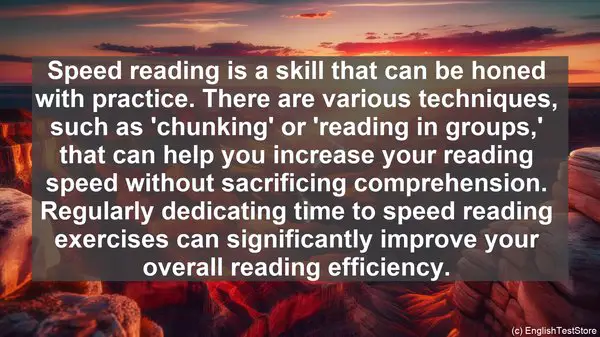Introduction: The Challenge of Time Pressure
As students, we often find ourselves facing the daunting task of reading lengthy passages within a limited time frame. Whether it’s for an exam or an assignment, time pressure can make this already challenging task even more overwhelming. But fear not! In this video, I’ll be sharing with you 10 tried-and-tested techniques that will help you read passages effectively, even when the clock is ticking.
1. Skimming and Scanning
When time is of the essence, skimming and scanning are your best friends. Skimming involves quickly going through the passage to get a general idea of the content, while scanning is about searching for specific information. By mastering these techniques, you can quickly identify key points and save valuable time.
2. Active Reading
Reading passively can be a time-waster. Instead, engage with the text actively. This means highlighting or underlining important information, jotting down quick notes, or summarizing key points. These actions not only help with comprehension but also make it easier to review the passage later.
3. Prioritize Paragraphs
Not all paragraphs in a passage are of equal importance. By quickly scanning the first and last sentences of each paragraph, you can often grasp the main idea without delving into every detail. This allows you to focus on the most crucial parts and avoid getting bogged down by less significant information.
4. Familiarize with Question Types
For exams, it’s essential to know the types of questions that are typically asked. This familiarity helps you anticipate what information you need to focus on while reading. For instance, if you know there will be ‘compare and contrast’ questions, you can actively look for such elements in the passage.
5. Use Context Clues
Encountering unfamiliar words can slow you down. But instead of reaching for the dictionary, try using context clues. The surrounding words or phrases often provide hints about the meaning. This way, you can continue reading without losing precious time.
6. Don’t Get Stuck
Sometimes, you may come across a challenging sentence or concept. In such cases, it’s important not to get stuck. Keep reading, and often, the surrounding sentences or the overall context will provide clarity. You can always come back to the difficult part later if needed.
7. Practice Speed Reading
Speed reading is a skill that can be honed with practice. There are various techniques, such as ‘chunking’ or ‘reading in groups,’ that can help you increase your reading speed without sacrificing comprehension. Regularly dedicating time to speed reading exercises can significantly improve your overall reading efficiency.

8. Take Advantage of Headings and Subheadings
Headings and subheadings not only provide an overview of the passage’s structure but can also act as signposts for important information. When time is limited, quickly glancing at these headings can give you a sense of what to expect in each section and where to focus your attention.
9. Review and Summarize
Once you’ve finished reading the passage, take a moment to review and summarize what you’ve read. This step not only reinforces your understanding but also helps in organizing the information in your mind. A well-structured summary can be a valuable resource when answering questions or discussing the passage later.

10. Time Management
Last but not least, effective time management is crucial. Break down the allotted time for reading and allocate specific durations for different tasks, such as skimming, reading in detail, and reviewing. This way, you can ensure that you’re making the most of the available time and not getting stuck on any one part.
